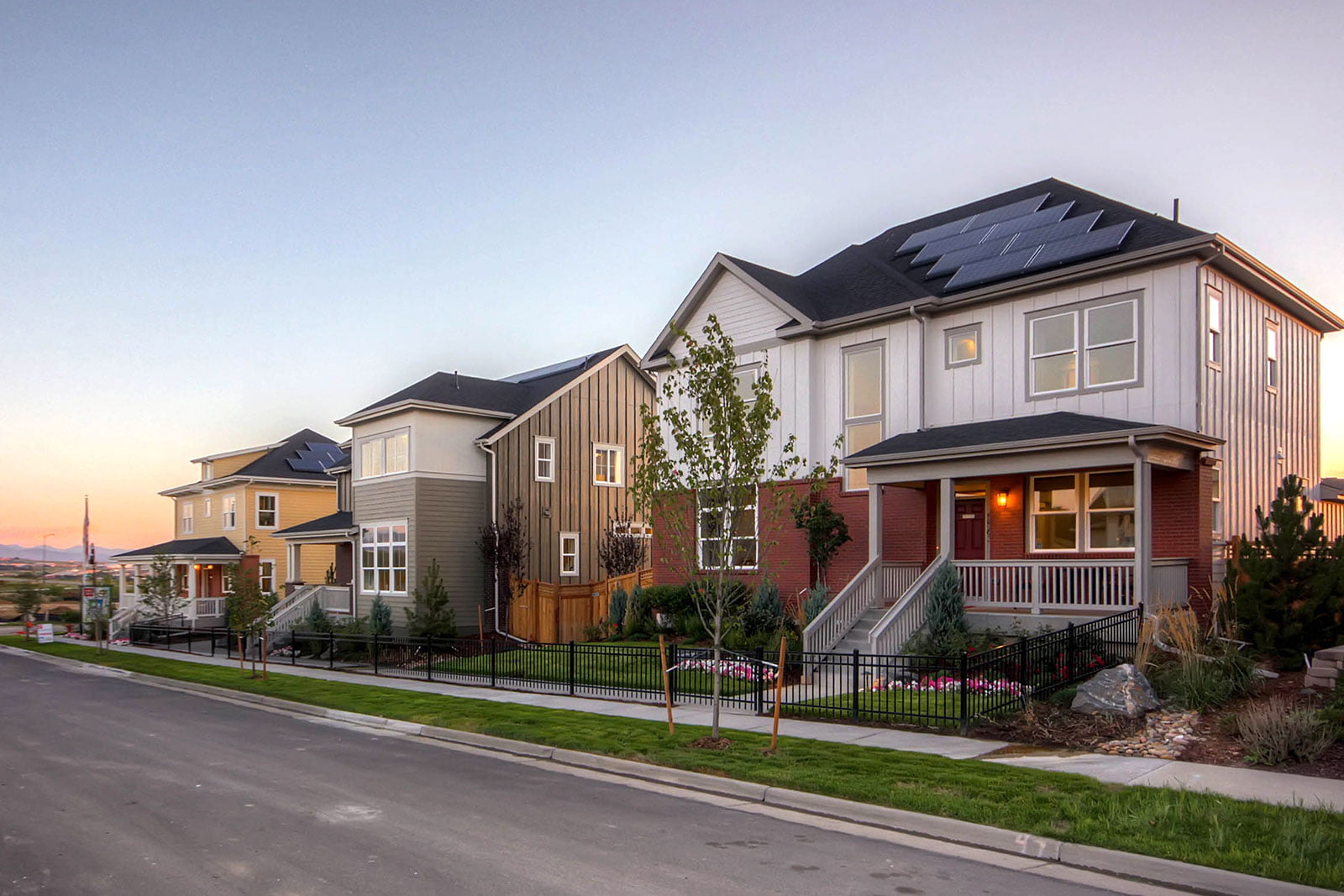The housing industry is more like a cruise ship than a ski boat. In other words, it’s not known for rapid changes in direction. While zero energy homes have been most active in the custom home sector, there are waves appearing in the mainstream, too. Some of the largest production builders in the U.S. have now embraced zero energy construction.
Production builders are capable of building several thousand homes each year in a dozen or more states. That takes a lot of organization, excellent communication and strict adherence to specifications. Given the volume of building, it’s not surprising that many large builders can be slow to absorb the latest technology. For most, the first step has been incorporating ENERGY STAR into their design and construction process. This third-party certification brings with it a focus on best practices, building science, energy modeling, performance testing, moisture control and indoor air quality – all necessary elements for getting to zero energy. ENERGY STAR homes are at least 15% more efficient than required by local codes, a significant improvement. Several of the nation’s biggest builders appear on the list of 2016 ENERGY STAR Certified Homes Market Leader Award Winners.
Getting to zero energy builds on ENERGY STAR by increasing insulation, air tightness, and equipment efficiency until the level of improvement is between 70 and 80% above code. That’s now happening across the U.S. as large national builders have begun offering “zero energy ready” homes. Zero energy ready homes only need the addition of solar electric panels to satisfy the home’s reduced annual energy usage. Here are several standouts.
Meritage Homes claims to build more than 80 zero energy homes each year. That achievement is built on the fact that all their homes start out 50% better than code, making the extra cost for the solar panels needed to reach zero energy a mere $5000.
KB Homes recently unveiled its most recent zero energy prototype, dubbed Double Zero 3.0, which boasts an impressive HERS Index of minus-two.
PulteGroup is also exploring the idea with by building a prototype zero energy home.
As you might expect, smaller production builders – those with volumes in the hundreds rather than thousands – are more nimble. Dozens of these builders have made zero energy a key element of their business models.
Thrive Home Builders in Colorado builds nine different lines. Seven of them are zero energy ready, including the ZEN Series pictured above. Gene Myers, founder and CEO, has a very direct approach to cost. “I ask customers to give me $100 more per month and I’ll return $300 back to them in energy savings.” That’s very persuasive. Thrive Home Builders emphasizes certification and takes maximum advantage of consumer interest in zero energy.
Avi Homes and Pacesetter Homes are the first builders to start construction in a new master-planned community near Austin, Texas. When fully built, Whisper Valley will be home to 7,500 zero energy homes, making it the largest such community in the U.S. A package of technology includes ground source heat pumps, solar-ready features, high-efficiency appliances and smart thermostats. Financing for these advanced features can be arranged with the goal of keeping the total cost of ownership below that of a conventional home.
Addison Homes in South Carolina has been building the most efficient homes in that area for the last decade. They recently migrated their business model to a zero energy focus. In their most recent project, every home buyer opted for a package of solar panels.
TC Legend Homes in Bellingham, Washington, achieves a high-performance thermal envelope using structural insulated panels. Foreshadowing the future of the movement, they identify their projects as positive energy homes.
Greenhill Contracting offers four zero energy neighborhoods in New York in ranging from affordable to luxury. Their work shows how zero energy homes make sense in cold climates, too.
The idea is not limited to North America. The first solar community in Wales will soon start in Pembrokeshire. Called Pentre Solar, this project is unique not just because the homes are zero energy, but they will also be all-wood construction harvested from a nearby valley and milled in a local shop. The homes feature well-insulated walls, plus passive solar heating and a community charging station for electric vehicles.
The adoption of new ideas always starts out slow until it reaches a tipping point at which multiple factors begin to push the idea further. Zero energy homes haven’t yet reached that tipping point, but it’s getting close. The biggest players in the home building industry can see the idea on the horizon. Now that some smaller production builders have made a commitment to zero energy, it won’t be long for the rest of the industry to follow. Once that happens the organization and economies of scale will lock zero energy construction into the mainstream.

